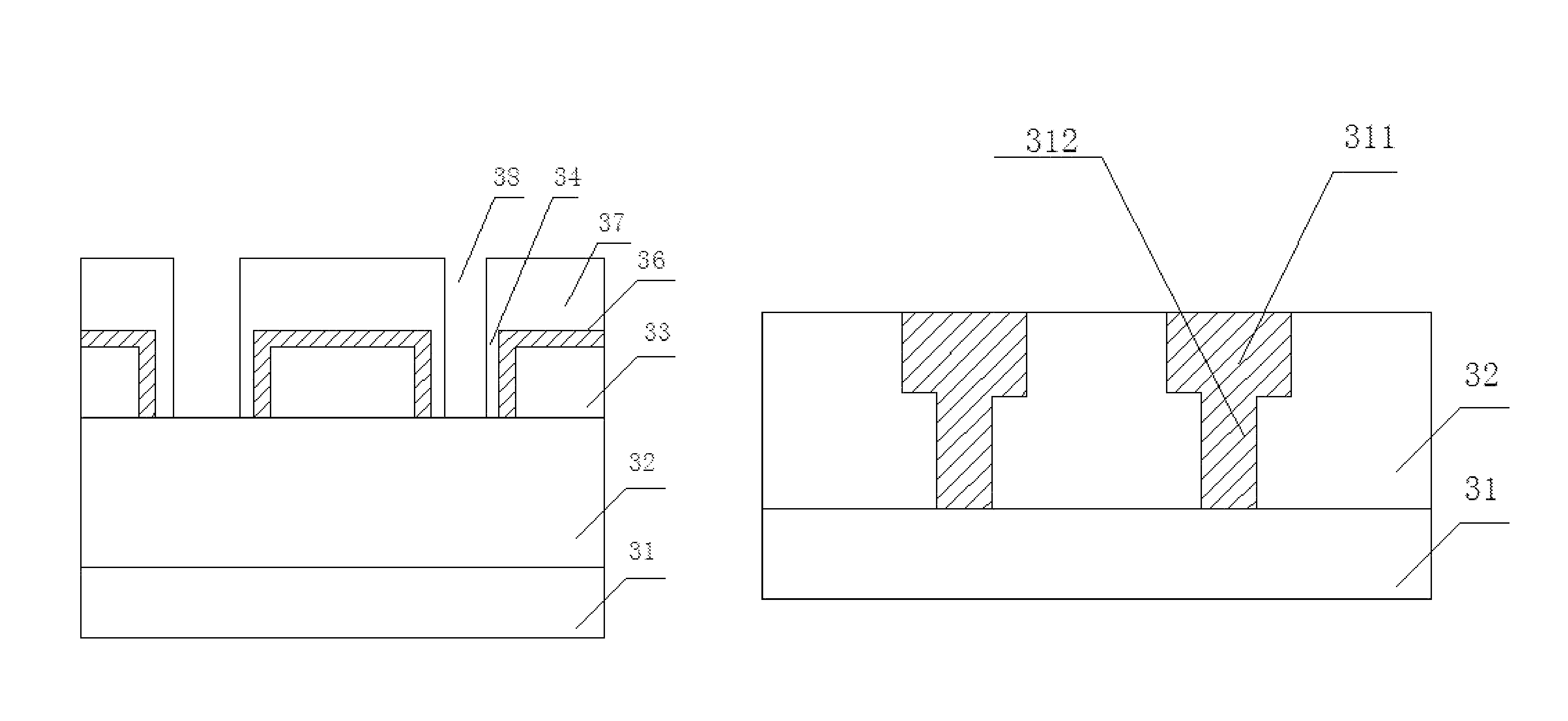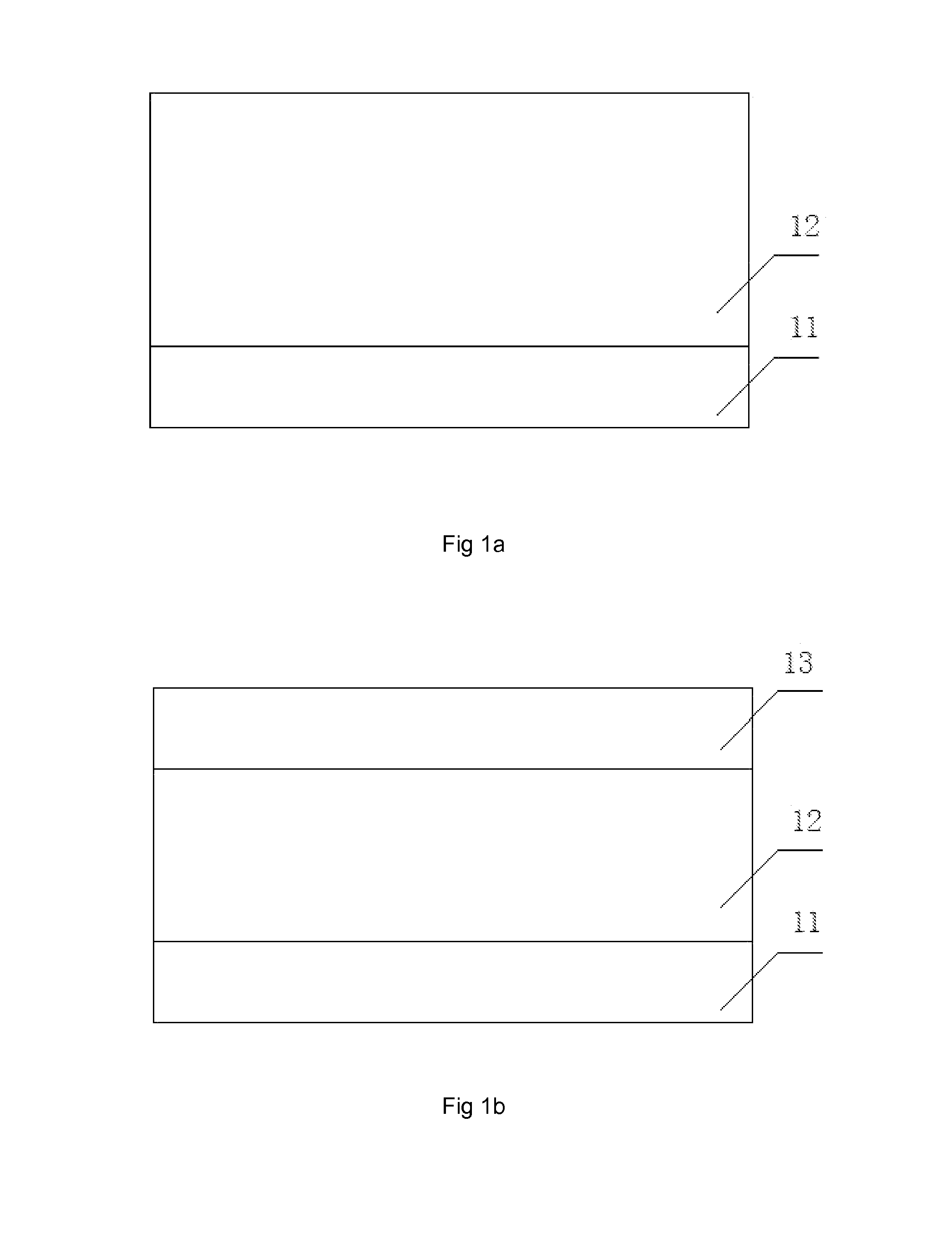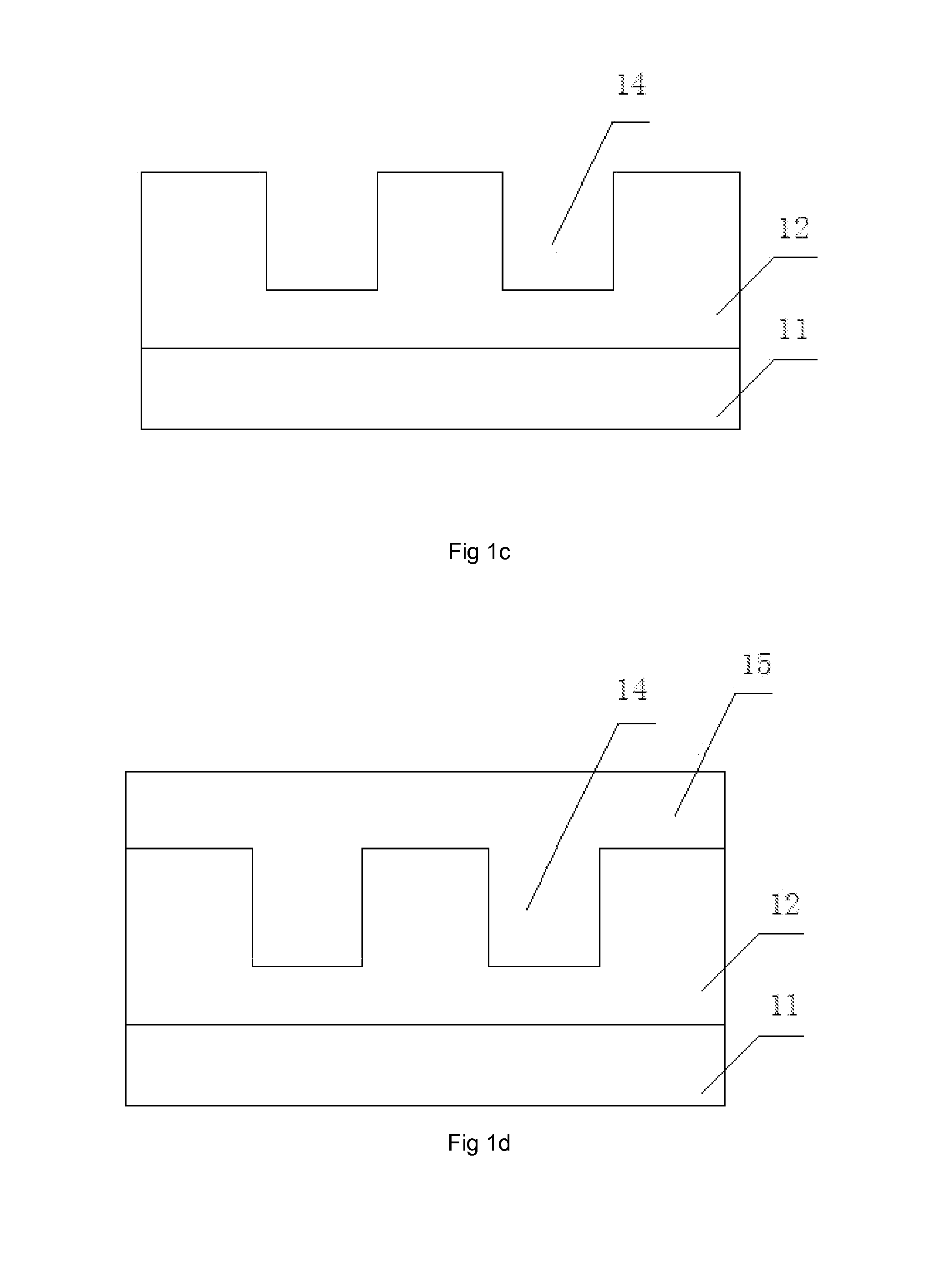Method to manufacture trench-first copper interconnection
- Summary
- Abstract
- Description
- Claims
- Application Information
AI Technical Summary
Benefits of technology
Problems solved by technology
Method used
Image
Examples
Embodiment Construction
[0020]The following is a further description of the present invention combined with figs and embodiments.
[0021]As is shown in FIG. 3a-3i, a method to manufacture trench-first copper interconnection includes the following steps:
[0022]As is shown in FIG. 3a, in the step S1: firstly, depositing a dielectric layer 32 on a silicon substrate 31;
[0023]In an embodiment of this invention, the dielectric layer 32 is a low-k dielectric layer.
[0024]As is shown in FIG. 3b, in the step S2: coating a first photoresist 33 on the dielectric layer 32;
[0025]In this step, the first photoresist 33 is photoresist which can form hard mask, such as photoresist containing silyl group, siloxyl group, and silsesquioxane.
[0026]As is shown in FIG. 3c, in the step S3: after exposure and development through a lithography process, removing the first photoresist 33 until a portion of the upper surface of the dielectric layer 32 is exposed, and forming a first metal trench structure 34 in the rest first photoresist ...
PUM
 Login to View More
Login to View More Abstract
Description
Claims
Application Information
 Login to View More
Login to View More - R&D
- Intellectual Property
- Life Sciences
- Materials
- Tech Scout
- Unparalleled Data Quality
- Higher Quality Content
- 60% Fewer Hallucinations
Browse by: Latest US Patents, China's latest patents, Technical Efficacy Thesaurus, Application Domain, Technology Topic, Popular Technical Reports.
© 2025 PatSnap. All rights reserved.Legal|Privacy policy|Modern Slavery Act Transparency Statement|Sitemap|About US| Contact US: help@patsnap.com



